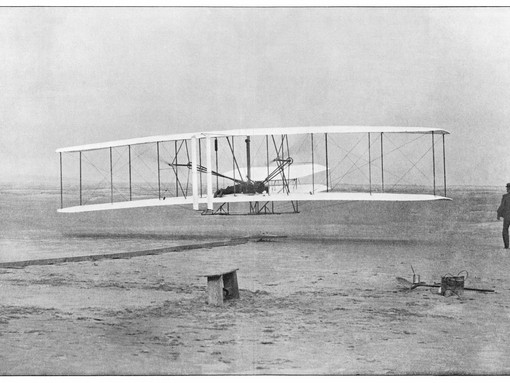
Assessing the Hidden 'Insider Threat' to Aviation Security
Air travel has become the cornerstone of 21st-century transportation. It transports thousands of people a day to destinations across the world. As aviation technology continues to improve and air travel maintains its global popularity, the risk of new threats is at a constant high. The aviation sector is especially prone to the hidden and potentially more dangerous ‘insider threats’. But why?
Airports are often considered the beating heart of the aviation sector. As a result, they are often where the risk of an insider threat is at its highest. Airport security across the globe has improved considerably over the last decade. This has undoubtedly made it much more difficult for outside threats to take place. However, these stringent airport security regulations have created a new problem…the insider threat.
Who or what is an insider threat?
An insider can be defined as anybody who exploits their position within a company or working environment for unauthorised purposes or malicious intent. An insider can be anyone affiliated with an organisation, including employees, consultants, contractors and non-executive senior staff. Airports are particularly vulnerable to insider threats due to their size and complex infrastructure.
Individuals who wish to carry out an attack on an airport are now taking advantage of airport security clearance processes. Rather than attempting to breach sophisticated airport security measures, insider threats exploit access areas of the airport, for example, job vacancies. If they do find employment they will be enrolled into the airport personnel security program. After completing this programme they will typically receive an airport security pass.
Public airports employ hundreds if not thousands of people, each working within different areas of the airport. This means a potential insider wouldn’t be required to learn a specific skill set to find employment within an airport. Rather, they could apply for a relatively low-skilled or junior position but still gain access to critical airport security checkpoints. Consequently, a greater number of job opportunities equals a greater number of potential insider threats.
What types of threats do insiders pose?
Insiders can attack almost any area of an airport with the right clearance. There have been several catastrophic attacks on the aviation industry over the last few decades. Terrorist attacks are a poignant reminder of how serious a lapse in airport security can be.
Perhaps the most common crimes committed by insiders we think of, often involve making a financial gain through the smuggling of illegal contraband. In 2013 several British Airways cargo workers were found to be assisting in the transportation of cocaine at Heathrow International Airport. Bringing in around £4.5million worth of cocaine each year.
This case, and others like it typically receive global media coverage. But, there are dozens of unreported insider crimes committed in airports across the world each year. Digital technology has become a vital component of any modern airport’s infrastructure.
It has revolutionised the aviation sector, allowing for quicker, cheaper and seemingly safer air travel. However, digital technology has also created a new opportunity for insider threats.
Cyber-attacks are becoming an increasingly common form of insider threats. Millions of pieces of personal information are stored on airport computer databases. With the right clearance and skill set, an insider could gain access to millions of bank details, home addresses, locations and other potentially dangerous information. An insider can then either illegally use the information directly or sell the information to third-party criminal organisations.
How to identify a potential insider threat
The best chance of identifying a potential insider threat and limiting risk, starts at the beginning of the recruitment process. Carrying out pre-employment background checks is a great way to ensure a candidate poses little threat before they are hired.
Identifying any criminal history that could relate to the role, can often determine whether a candidate should or shouldn’t be hired. Airport security screening procedures are vital in ensuring airport safety. Having the right pre-employment checks in place can significantly reduce the risk of an insider threat.
At Morson Screening we have witnessed first-hand how implementing an effective pre-employment screening procedure can ensure robust insider threat prevention. Our screening solutions cover a wide range of background checks and can be tailored to almost any sector or organisation.
Morson screening background checks can include:
Employment referencing and gap period analysis (Aviation Vetting Requirement)
DBS or Disclosure Scotland certificate (Aviation Vetting Requirement)
Overseas criminal record checks (If Required, Aviation Vetting Requirement)
Identity Check and right to work verification (Aviation Vetting Requirement)
GSAT (Aviation Vetting Requirement)
CAA Security Interview (Aviation Vetting Requirement)
Address validation (Aviation Vetting Requirement)
Financial summary reports / financial detail reports (credit check, bankruptcy, IVA, CCJ)
Qualification verification (including professional memberships and professional qualifications)
Social media profiling
FCA search
CIFAS check
Directorship search
CV analysis
Sanctions check
Drug and alcohol testing
For more information on how Morson Screening can help secure your recruitment process, contact us today at 0161 786 7025.
Alternative airport insider threat detection methods
Other methods of insider threat detection can be carried out within different airport security lines. For example, each area of an airport comes with its own insider threat risk. Baggage handling has access to luggage, check-in assistants have access to personal details.
So, in order to minimise the risk of a threat each department or area, can carry out their own insider threat risk assessment. This will identify any potential weak spots within a certain area or position within the airport that an insider could exploit.
Another measure airport security teams or departments can take to minimise the risk of an insider threat is through providing insider threat training. This specialist training can enable airport personnel to identify typical indicators of insider threat behaviour. Enabling each member of personnel to quickly identify potentially dangerous airport insider threats. Some airports even employ a dedicated threat program manager to work across different departments. It is the responsibility of the threat program manager to ensure every department is equipped to identify and resolve potential threats.
This article has offered a small insight into the much wider issue of insider threats affecting the aviation sector. There is no definitive resolution to stop insider threats from occurring. As technology evolves, so will the routes insiders can take to breach safety procedures. However, what we have established is that prevention is better than cure.
Determining if a person could pose a potential threat to your operations before hiring them, is the first line of defence. Having the right pre-employment screening processes in place will significantly reduce the likelihood of an insider carrying out an attack. At Morson Screening we work within highly targeted sectors to provide our clients with a tailored pre-employment screening service.
For more information about the services we provide, contact a member of our team today on 0161 786 7025, or visit the Morson Screening website here.
















